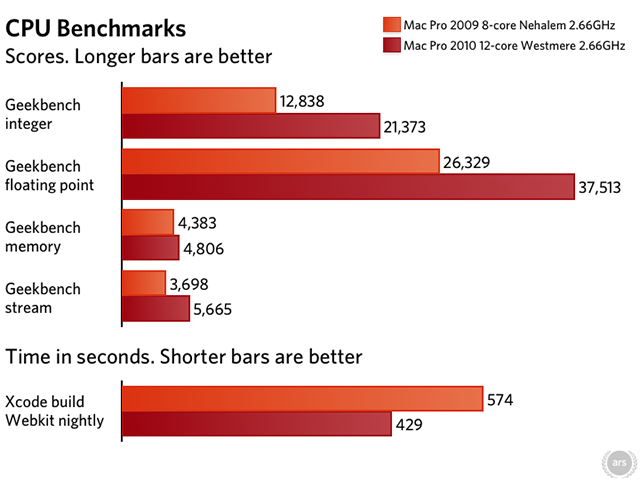Review of London Fog Womens Nin Mac Open Toe Heeled Stretch Sandals
The 64-bit kernel
The 2010 Mac Pro boots into 64-bit style by default. If you enter "uname -a" in the Last, it shows which kernel you're running:

Top: my MacBook Pro running the 32-fleck kernel (i386). Bottom: the 2010 running the 64-bit kernel (x86_64). You could employ a Terminal hack or one of the many utilities out in that location to modify it to 32-flake way, but at that place'due south no good reason to do this anymore.
In that location's nothing special in the 2010 Mac Pro hardware vs. the 2009 with regard to 64-bit. Apple was but giving driver developers some time to polish their 64-fleck ports, and so they could moving-picture show the switch without tossing end users into an unsupported printer hell. I have switched between 32-bit and 64-bit kernel modes since 10.six came out, and I haven't noticed whatsoever difference in performance. What benchmarks I've tried showed speed to be the same.
But there are some growing pains that I noticed with the graphics drivers. The machine started up once and the main screen was blackness. Sleeping it and waking it fixed the trouble. I've seen some bugs like this in the past with the 2009 Mac Pro, and the 64-bit kernel is more prone to these quirks. The Wacom Intuos3 driver sometimes fails to load on boot, forcing me to employ the keyboard to open the Wacom Organization Preferences to kick it into loading.
On the 2009 Mac Pro, 64-bit mode would sometimes cause the calculator to wake without network access. Sleeping information technology once again and waking information technology usually stock-still information technology. This is to exist expected and, fortunately, kernel panics are extremely rare equally of x.6.iii (I've had 1 in the past two months, and it was acquired past VMWare trying to run Batman in a virtual automobile, non casual utilise). I haven't seen any on the 2010 machine. Otherwise, I accept a few custom devices that run fine in 64-bit—I have a Microsoft Natural 4000 USB keyboard, a USB dongle for Five-Ray, an Epson R1800 printer, USB Overdrive for my Logitech G5, and the iPad and iPhone syncing fine with iTunes. Unless you have an aging printer with no 64-fleck driver, you're not going to have whatever problems with the 64-chip kernel.
Benchmarks
For all real-world application benchmarks (as opposed to constructed), I picked something slow and computationally expensive, where users might exist staring at a progress bar for long periods of time.
CPU benchmarks: GeekBench & Xcode

Impressive showing past the new machine, and the memory benchmark shows off the faster 1333MHz memory. I don't tend to similar constructed benchmarks just people ask for them, then take from that what you will. If you make your living running Geekbench, run out and get this machine.
As for Xcode, I wanted to do a compile exam since I know that many developers work on desktop machines and compiles can exist really time-consuming. The results were very good, since the cores were consistently saturated. I'm no programmer, so it's difficult to say how much you'll see these gains across the board with compiles.
Imaging benchmarks

Photoshop actions set
Cue Nelson Muntz. Photoshop CS5 isn't well multi-threaded; it's known, and Adobe spent a lot of the coding attempt in CS5 merely getting it ported to Cocoa and 64-flake on Bone X. So you can't exist too hard on them at this stage. The criterion I ran was a series of mutual professional person filters (lens blur, gaussian mistiness, unsharp mask, etc.), resizing, rotating, and conversion, strung together on a 200MB, viii-bit epitome. Certain filters similar the radial mistiness used all cores, but then the very tedious lens blur didn't.
Photozoom Pro 3
This is my favorite upscaling app for those times I have to brand wall-sized art from mag-sized images. The quality produced by the S-spline Max setting is often surprising, but it'southward very demanding. Version three added impressive multithreading gains, so I was interested in seeing what gains could be accomplished past the increased core count. As you tin can tell from the decrease in time, the core usage was very proficient: ?

I wish all imaging apps scaled across cores too as this one does.
Aperture export project to JPEGs
Aperture uses the GPU for many effects, but RAW decoding and export are 2 things that it uses the CPU cores for. The results don't show an impressive gain, but the core usage was skillful:

It looks like a kid setting an expensive EQ.
Lightroom 3 convert library
Non the best advertising for this machine, given that it'south slightly slower. Cadre usage was effectually 600% (of 2400% total), and so it wasn't much of a surprise. Over again, I'm not cherry-picking demos of how groovy this auto can be with each app; I'1000 merely testing common processor-intensive working scenarios for each app every bit a random sampling. I'm certain every program tested has that 1 great 24-thread demo, simply I'd wouldn't be doing you any favors by just testing that one instance, creating the impression that you'll instantly see massive gains with this system.
Photomatix HDR batch with noise reduction
The Photomatix HDR merge alternated between using one cadre and all cores. You could meet that the racket reduction portion was multi-threaded but the merge portion wasn't:

Look at all those empty seats. It'south similar a printing conference for the next Grand. Night Shyamalan movie.
This was the longest part of the epitome processing, and so the benchmark results for the 12-cadre are not very impressive.
Source: https://arstechnica.com/gadgets/2010/10/tri-screen-cpu-monitor-ars-reviews-the-12-core-2010-mac-pro/3/
Postar um comentário for "Review of London Fog Womens Nin Mac Open Toe Heeled Stretch Sandals"